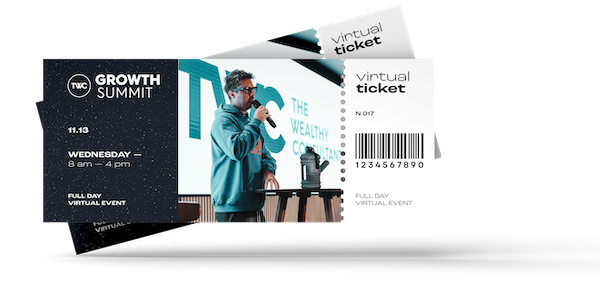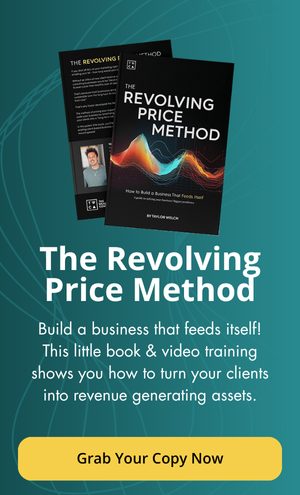Upstream vs. Downstream
In marketing, not all leads are created equal.
Some are “upstream,” sitting further back in the awareness process, and some are “downstream,” where they’re already swimming toward your offer.
Picture upstream marketing as casting a wide net in more unpredictable waters. It’s about gently engaging those who are either unaware of their problem, unsure of your solution, or not fully warmed up to buy. These folks need a little TLC—more education, nurturing, and careful guiding—before they’re primed for your offer.
Now, downstream marketing is a whole different story.
This is where you meet the sophisticated segment of your market: the most aware, the most qualified, and the ones who know enough to appreciate your value immediately. These leads are already familiar with the pain points, the solutions, and the options available to them.
They’re just waiting for the right moment and the right offer. In fact, when you carve out a portion of your marketing efforts to target this downstream audience, you can unlock a surprisingly lucrative revenue stream. Think of it in Pareto Principle terms – 80% of your revenue can often come from 20% of your audience. And the odds are, that the 20% is your most engaged and aware segment.
To help structure your approach to sophisticated leads, we’re going to dive into Eugene Schwartz’s five levels of awareness. It’s a quick refresher but essential to understand exactly where your audience is so you can meet them there and make a big impact.
The Five Levels of Awareness – A Quick Recap
What do we even mean when we say “most aware” or “least aware” segments of the market?
Eugene Schwartz, a master of marketing psychology, identified five levels of awareness that define how your audience approaches your offer. Here’s a breakdown:
- Unaware: This segment doesn’t even realize they have a problem. Think of them as the hardest to reach in a short-term campaign because they need major education first.
- Problem Aware: They know something’s wrong but don’t know what the solution is yet. They’re curious but still need some convincing on solutions.
- Solution Aware: Now we’re getting closer—they understand there’s a solution but haven’t settled on a provider.
- Product Aware: They’re familiar with the solution and know about you, but they aren’t totally convinced you’re “the one” just yet.
- Most Aware: This is the goldmine for sophisticated marketing. They know they have a problem, they know solutions exist, and they’re aware of your brand. They might even be waiting for you to make the first move.
With the most aware audience, your approach can (and should) shift entirely. You’re not there to sell them on the existence of a problem or a solution. They’re already primed. Let’s talk about three ways to engage this highly aware, sophisticated segment and get them over the finish line.

Cut the Crap – Get to the Value
The “most aware” market doesn’t need clever “marketing speak” to convince them to buy—they’re looking for value that speaks directly to their sophisticated needs.
Forget the generic language. These leads want to know how you’ll impact their business, not what your program technically offers.
Speak in value driven language that clearly shows them the outcome in unmistakable terms.
Example:
- Generic, Feature-Based Marketing: “With our program, you’ll get 12 weeks of coaching, access to a library of resources, and one-on-one support to help you grow your business.”
- Okay, but what is in it for THEM?
- How is this any different from programs with similar features?
- Doesn’t form a connection between these features and the value they represent
- Value-Driven Marketing: “Our program compresses a year’s worth of business growth into 12 weeks, eliminating trial and error. With direct, personalized guidance, we’ll tackle your specific bottlenecks and nail down your top 3 needle-movers, so you can scale profitably without wasting months testing ineffective strategies.”
- Notice, we’re building a “so that” bridge between each feature and the VALUE of that feature to the end user. “We give you X so that you can get Y.”
When you’re marketing to top shelf buyers, “currency” isn’t just about money. It’s about time saved, stress eliminated, and new growth opportunities unlocked. So, instead of emphasizing what your course or service includes, highlight how it creates measurable results that only someone in their shoes can truly value. They’re already looking to say “yes”—your job is to show them why they should say “yes” to you…

Don’t Try to Proactively Handle Objections That They DON’T HAVE
Objection handling in your marketing and sales process is good, right?
Well, yes. But, one of the most common mistakes we see businesses make when going for the top percent of their market, is trying to get so “ahead” of the market that they start handling objections that their audience isn’t even telling them they have.
This bites you in the ass TWO different ways:
- Your marketing feels slightly out of sync with your ICP’s actual wants/needs/desires.
- If that wasn’t an objection they actually had… NOW it is. And all because you introduced it into the conversation.
The real issue (underneath the surface issue) here is that most marketers haven’t gone deep enough on their Ideal Client Profiles (ICPs).
In our article, “Ideal Client Profiles: Who You Serve and Who You Don’t,” we outline the importance of knowing exactly who you’re speaking to. If your audience consists of experienced business owners seeking exponential growth, make that clear. Appeal to their specific challenges and goals. Don’t try and guess what they are. Don’t fall into the trap of thinking that you know the market better than it knows itself. You don’t.
By aligning your message to their profile, you’re showing that you understand their needs on a granular level—building trust and reinforcing their sense that you’re the right partner for them.
Leverage Exclusivity Through Niching Down
One powerful way to engage the most sophisticated segment of your market is by reinforcing exclusivity. Highly aware leads want to feel like they’re stepping into an elite circle, not just another course or program.
This means niching down and defining your Total Addressable Market (TAM) as specifically as possible. The more tailored your offer, the more value these high-caliber clients will see in it.
This is a strategy we explore in depth in “Defining Your TAM: How Far Down Should You Niche?.” Don’t hesitate to make your offer narrow and bespoke, addressing challenges that only a select few in your audience will understand. It’s all about positioning.
When you convey that your program is built with a hyper specific “someone” in mind, it creates a powerful incentive for highly aware clients to enroll, knowing they’re part of something that wasn’t made for the masses… it was made for them.
Getting Clear = Getting Paid
Engaging the most aware, sophisticated segment of your market isn’t about reeling them in with beginner’s hooks or vague benefits. It’s about connecting with their high-level needs, speaking to their specific profiles, and creating a strong sense of exclusivity. When done well, downstream marketing to the most aware can drive massive revenue while also positioning your brand as the top choice for serious, high-level clients.

Want Us to Help You Build a Custom Strategy?
If you’re ready to dive even deeper into strategies like these, mark your calendar for November 13th, when Taylor Welch will host the TWC Growth Summit. This full-day virtual event will cover our 4-part bulletproof business model, a system that’s helped our clients and students unlock new revenue and stability in their businesses. Secure your spot now for only $27, and learn how to elevate your offer and engage the most aware segments of your market like never before!

